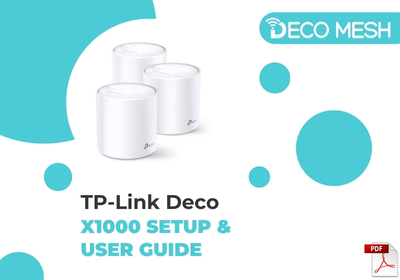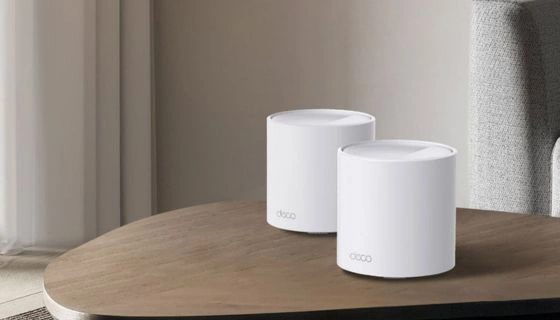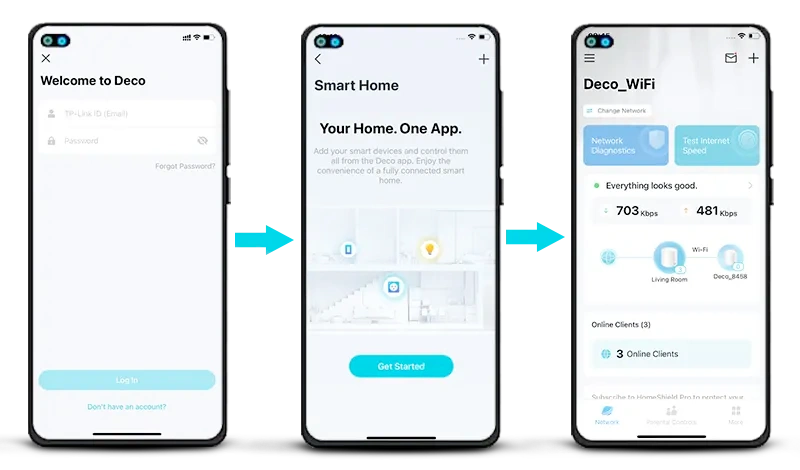TP-Link Deco X1000 Setup: Whole-Home WiFi 6 Coverage Made Simple

Noone likes weak signals. It’s annoying to wait, when you’re speaking anything significant, video calls freeze. That odd room at the rear of the home where the WiFi just stops working. Everyone has been there. You want to solve it without having to become a network engineer.
The TP-Link Deco X1000 setup is for that.
It’s not showy. Doesn’t use jargon to get you to buy. This WiFi 6 mesh system is precisely what you need to cover your whole house and function the way it should. No drama. No menus that are hard to understand. There is just fast, clean WiFi in every room. Easy.
Let’s have a look at what this little man does.
What Is the Deco X1000 Setup?
The TP-Link Deco X1000 is a mesh WiFi 6 system that works on two bands. You receive two or three of the same little units (depending on the pack you select) that you plug in throughout your house. These “Decos” work together to create a single WiFi network that covers your complete area. No switching between SSIDs. You won’t lose your signal as you go from your bedroom to the kitchen.

Specifications include:
- AX3000 speeds, enabling up to 3 Gbps bandwidth (2.4 GHz and 5 GHz combined).
- OFDMA and MU-MIMO simplify simultaneous device utilization.
- A 2-pack covers around 4,000 to 5,000 square feet.
- WPA3 safety
- And purportedly more than 100 devices at once, but really, even if you just have 30, you’re OK.
That’s all you need to know. But what is it like to live with?
Set Up TP-Link Deco
No one wants to set up routers. That’s the way it is.
But TP-Link makes it tolerable here. You don’t have to perform TP-Link Deco login to web interface and mess with strange admin settings. The TP-Link Deco app does it everything.
That’s why most people get this one right away: it’s simple.
What You Will Need:
- A smartphone that can connect to Bluetooth and the internet
- The Deco app (free for Android and iOS)
- A modem that works
- A little amount of patience (but not a lot)
Step-by-Step: Setting Up the App
- Take the Deco X1000 units out of their boxes.
- Choose one; this will be your primary unit. Put it in the wall socket.
- Connect it to your modem using the Ethernet cord that comes with it.
- Wait for the light to start flashing blue. That says it’s time to depart.
- Start the Deco app. It will ask you what kind of model you want to put up. Choose X1000.
- Do what you’re told. It really does help you with everything, from naming the network to making the password.
- The software lets you add the second Deco after the first one is done. It syncs up quite quickly if you plug it in someplace else (not too far away).
- Do the same thing with the third one if you have one.
It shouldn’t take more than 10 to 15 minutes. No strange codes to figure out. No secret menus.
Other Ways to Get It Ready?
Hey. The app is the best way for most people to go. But maybe you want to do things your own way. Or maybe the app won’t work that day. There is also a configuration for the browser.
How to Use Your Browser (Advanced Deco X1000 Setup)
You may open a web browser and type in tplinkdeco.net.
Perform a TP-Link Deco login or create an account if you have none. The online interface has much of the same choices, such WiFi name, password, parental controls, and so on, but it looks more like a regular website.
Good to have if the app doesn’t pick anything up. DHCP settings or port forwarding may need minor adjustments. Though it’s not for everyone, it’s great to know.
Setting things up the way you want
You can’t simply leave it alone once it’s up and going. Depending on how your house is set up, you may want to change a few things.
You can do the following using the app (or online dashboard):
- You may change the SSID and password at any time.
- Set time or bandwidth limits for Guest WiFi.
- Enable Parental Controls to limit apps or websites on your child’s devices.
- Set a priority for a device. Do you want your business laptop to be in the quickest lane during Zoom calls? You can do that.
- Turn on QoS for better gameplay or streaming.
- See who’s connected; yes, you can kick that neighbor who isn’t paying for your network off.
Everything is in simple English. Not full of technical jargon. Just swipe, tap, and you’re done.
How to Fix Things When They Go Wrong?
All right, let’s be honest. No WiFi system is completely safe. Things happen. When things don’t go as planned, do this:
My internet shuts off for no reason
- See whether the light on your main Deco Setup is yellow or red.
- Restart your modem and Deco by unplugging them, counting to ten, and then plugging them back in.
- Open the app and see whether it says there is an outage.
- Move your secondary Decos closer to the primary one.
The app can’t locate the second Deco.
- Make sure Bluetooth is turned on
- Check that it isn’t too far away from the main unit.
- Try again after resetting the second Deco (hold the reset pinhole for 10 seconds).
Some gadgets are crawling while others are OK.
- If your phone or laptop can handle it, try switching that device to the 5GHz frequency by hand.
- See whether QoS is slowing things down
- Restart the whole system. It seems ridiculous, but it works 80% of the time.
Problem: Everything seems OK, but the internet is still sluggish.
- Launch the app and check the speed of your internet. If it’s slower than what you pay for, attempt a wired speed test from the modem.
- It might be a problem with your provider, not with Deco.
- Check to see if there is a strange device on your network that is using up all the bandwidth. Some smart TVs and security cameras may do this.
The longer you use it, the better you’ll become at spotting problems. Also, the app will let you know if anything goes offline.
Final thoughts
This is the bottom line.
The Deco X1000 setup is probably not the greatest WiFi 6 mesh system in the world. Some are flashier and have more bands and better specifications. But what if you want something that simply works, is easy to set up, and gets rid of the annoying dead zones and lost video calls?
This stuff works.
It’s meant for normal houses. For everyday folks. Not those who are into networks. This is a good choice if you simply want to plug it in and forget about it. Also, it’s not too expensive, particularly when you compare it to those $500 mesh kits.
For families, those who work from home, or anybody who is sick of lousy WiFi, yes, go for it.


